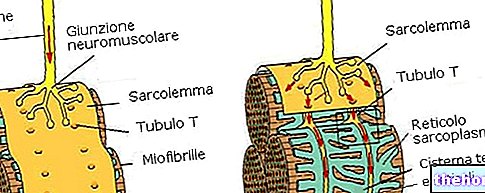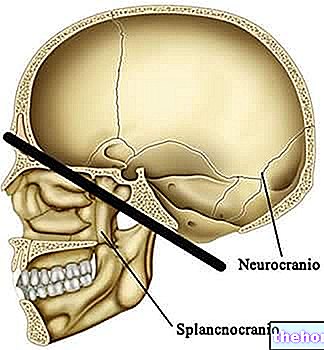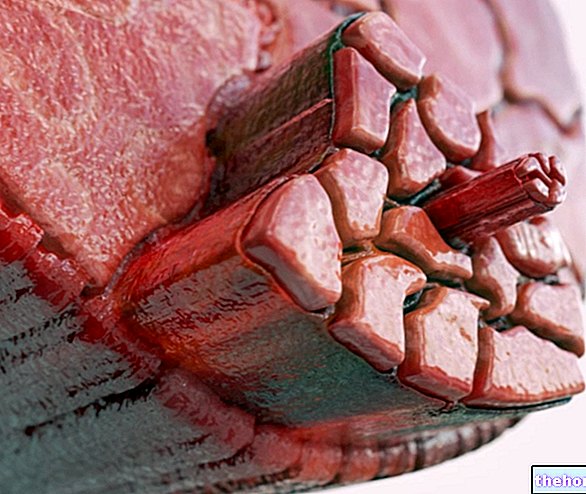" introduction
The blood that reaches the glomerulus is not completely filtered, but about 80% immediately returns to the circulation without undergoing any filtration. If this were not the case, the important quantity of blood, with its load of non-filterable cells and proteins, would risk to clog the "sieve", compromising the entire kidney function. For this reason the organism prefers to filter small amounts of blood at a time.

Reabsorption of glucose
By virtue of its small size, glucose is rapidly filtered at the glomerular level; for this reason its concentration in the filtrate is identical to that of the plasma.
If in a graph we report the plasma concentration of glucose on the abscissa and its concentration in the filtrate on the ordinate, we obtain a straight line, since the two values are directly proportional (the more glucose is present in the plasma and the more we find in the filtrate). This relationship is valid both for physiological blood glucose values and for higher glucose concentrations (diabetes).
After being filtered, the glucose is readily reabsorbed in the proximal tubule, where there are epithelial cells similar to those of the intestine (with microvilli). This operation is quite complex: glucose is captured by specific transporters, capable of simultaneously binding a sodium molecule and a glucose molecule and transporting them together in the cytoplasm of the cells that make up the outer membrane of the renal tubule; at this level a sodium pump potassium brings sodium back to the outside, while a GLUT-4 transporter performs the same operation with sugar (pouring it into the interstice between tubules and capillaries).

Under physiological conditions these transporters are able to recover all the glucose but, since their number is limited, when the sugar concentrations in the filtrate rise excessively, some glucose escapes reabsorption. When all these carriers are bound to a molecule of glucose (saturated) the original and direct proportionality between filtered glucose and reabsorbed glucose is therefore lost. This phenomenon occurs at the so-called renal threshold, which is equivalent to a glycaemia of 300 mg / dl. Once this limit is exceeded, the reabsorbed glucose concentration can no longer increase, even if the glucose concentration in the filtrate continues to rise. Consequently, the concentration of sugar in the urine, equal to 0 below the renal threshold, will begin to increase proportionally.
The limit of 300 mg of glucose per deciliter of blood is a theoretical value, but in practice this threshold is much lower, equal to about 180 mg / dl. This difference is due to the fact that not all nephrons are equally adept at recovering glucose, due to the variability in the number of transporters. In other words, if some nephrons are very efficient in reabsorbing sugar because they are rich in carriers, others are a little less so because they are poor in carriers.
Since the nephrons work individually (they are the functional unit of the kidney), it is sufficient for one of them to lose a molecule of glucose for it to be found in the urine, giving rise to a condition known as glycosuria.
When blood glucose exceeds 180 mg / dl only some nephrons let out small amounts of glucose, while when glycemic levels exceed the theoretical threshold of 300 mg / dl, all transporters are saturated, they are unable to reabsorb all the glucose and the nephron excretes it in the urine. For practical purposes, it is therefore necessary to refer to the real threshold, because a diabetic person, who has excessively high glycemic values, begins to have glycosuria when the glycaemia exceeds 180 mg / dl.
The presence of glucose in the urine is very dangerous, since this sugar draws large quantities of water, dehydrating the body; moreover, by facilitating bacterial proliferation, it increases the incidence of urinary tract infections.
Body water regulation
The kidney plays a very important functional role also in the regulation of body water. 180 liters of plasma are filtered every day, of which, normally, only one and a half liters is excreted.
The kidney is able to regulate the excretion of water according to physiological needs. It is common experience to notice a reduced excretion of urine in conditions of dehydration and a greater flow when consuming large quantities of fluids with the diet.
The body of an adult man contains about forty liters of water, resulting from the balance between inputs (food, drink, metabolism) and outputs (skin, breath, urine and faeces).

Other articles on "Kidney and glucose reabsorption"
- Kidney kidneys
- Kidney and salt and water balance
- Nephron
- Renal glomerulus
- Glomerular Filtration - Filtration rate
- Regulation of glomerular arterial resistance
















.jpg)











